| Article ID | Journal | Published Year | Pages | File Type |
|---|---|---|---|---|
| 4269493 | The Journal of Sexual Medicine | 2015 | 10 Pages |
IntroductionClinical care decisions for peripubertal adolescents with gender dysphoria (GD) should be made carefully. Furthermore, the identification of biomarkers is very important for rapid and accurate diagnosis of GD in young people.AimThe aim of this study was to investigate gene expression profiles during masculinization of the neonatal female mouse brain by testosterone and to identify biomarkers related to GD.MethodsMicroarray analysis was performed using RNAs extracted from the brains of neonatal mice treated by intraperitoneal injection of testosterone propionate during the sexual determination period. Sequence motif enrichment analysis for sex hormone receptor responsive elements was performed for the flanking regions of genes that showed significant expression changes following administration of testosterone propionate.Main Outcome MeasuresWe revealed a gene set with marked changes in expression during brain masculinization of neonatal female mice following administration of testosterone propionate.ResultsWe identified 334 genes that showed differential expression in the masculinized neonatal female brain after testosterone propionate treatment. Interestingly, most of these genes are not reported to be expressed in a sexually dimorphic manner. Moreover, sequence motif enrichment analysis suggested that masculinization of the neonatal female brain by testosterone was controlled more by estrogen receptors than androgen receptors.ConclusionsDifferences in genes that are expressed differentially following administration of testosterone injection from known sexually dimorphic genes suggest that many GD-related genes are upregulated during female brain masculinization. The gene set identified in this study provides a basis to better understand the mechanisms of GD and delineate its associated biomarkers. Nakachi Y, Iseki M, Yokoo T, Mizuno Y, and Okazaki Y. Gene expression profile of the neonatal female mouse brain after administration of testosterone propionate. J Sex Med 2015;12:887–896.
